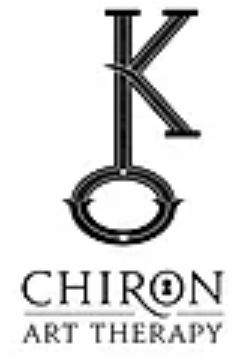
In today’s fast-paced corporate environment, companies look for new ways to increase employee satisfaction and encourage productivity. While traditional approaches such as competitive salaries, flexible working hours, and professional development opportunities are essential, there is a growing recognition of the need to address employees’ mental and emotional well-being.
The Power of Art Therapy in the Workplace
One powerful yet often overlooked tool for achieving this is art therapy. Implementing art therapy in the workplace can be a powerful tool for increasing creative output.
A Personal Journey to Art Therapy
First, I want to give you a little background. Art therapy is my second career. For my first career after college, I worked in commercial insurance and risk management for 15 years. It was lucrative work in a fast-paced environment, and I learned a lot about business during this time. One of the significant differences between a work environment I enjoyed and one that I struggled with was how corporate culture perceived me as an employee.
Recognizing Creativity and Humanity
In the environments I thrived in, my supervisors recognized my creativity and appreciated my humanity. What I mean by this is because I had a creative background, I was given tasks that involved problem-solving and sometimes even presentation building that utilized some of my design skills. What I mean with regard to my humanity is the supervisors I enjoyed working for the most recognized that I was a motivated, honest, driven, and productive person. However, at the same time, they also realized that sometimes I needed flexibility or support in other ways.
I found this especially true while my mom was receiving chemo treatments and my grief process after her death. At the time my mother was diagnosed, my boss said to me that he understood that my family was my most important priority and that work would accommodate my needs so that I could take care of my mom in the way that I needed to. I am still grateful for the understanding and flexibility that gave me and one of the most stressful times of my life.
Understanding the Corporate Grind
I lead with this story because I understand what it’s like to work in a cubicle year in and year out. Some projects I worked on included auditing data on one spreadsheet for a week or two at a time.
Negative Impact of Unappreciative Work Environments
The work environments I struggled with expected employees to be productive the entire time they were at work, discouraged taking time off, and seemed oblivious to what might help employees feel valued. Such an example happened during the 2008 recession when my employer decided that where they would cut their spending would be by no longer providing coffee in the office. The employees started a coffee club, and this turned into a sticky situation when we were deciding whether or not it was fair to offer our clients coffee when they met with us in the office. Getting rid of the coffee seemed like such a small thing that greatly impacted morale.
Transition to Art Therapy
I’ve spent much time thinking about how I work and checking in with myself, my health, and my skillsets now that I’m an art therapist. I also work with established, professional women who struggle with concerns like stress, burnout, grief, setting boundaries, anxiety, and depression.
How Companies Can Make a Difference with Art Therapy in the Workplace
Companies could help reduce the environmental factors contributing to these concerns. Doing so would reduce burnout and increase employee satisfaction, teamwork, and productivity. Based on my knowledge of creativity, I think such measures would also improve problem-solving and creativity across organizations. This change, in turn, would help these organizations stand out among the competition because of their ability to find creative solutions to an ever-increasing complex world.
The Role of Art Therapy for Employee Well-Being
According to the American Art Therapy Association, “art therapy is a mental health profession that enriches the lives of individuals, families, and communities through active art-making, creative process, applied psychological theory, and human experience within a psychotherapeutic relationship.”
It can be an invaluable resource ensuring a supportive, healthy environment in the workplace. Here’s how:
1. Reducing Stress and Burnout:
Due to demanding workloads and tight deadlines, employees often experience ubiquitious stress which can lead to burnout. Art therapy provides a creative outlet for employees to express their feelings and alleviate stress. Employees can engage in mindfulness practices through guided art activities that promote relaxation and mental clarity.
2. Enhancing Emotional Intelligence:
Art therapy encourages individuals to explore and understand their emotions. Employees can develop greater self-awareness and emotional intelligence by engaging in creative expression. This heightened emotional awareness can improve communication, empathy, and team collaboration.
3. Boosting Creativity and Innovation:
Creativity is a critical driver of innovation in any organization. Art therapy sessions can help employees break free from conventional thinking patterns and stimulate their creative problem-solving abilities. Creativity can improve enjoyment, stimulate mental capabilities, and encourage new ideas. These outcomes can cross-polinate throughout organizational cultures and lead to an increase in employee satisfaction as well as productivity and company-wide innovation.
4. Improving Workplace Relationships:
Strong interpersonal relationships are the cornerstone of a harmonious and productive workplace. Art therapy group sessions provide a space for employee connection and trust-building therefore, strengthen their relationships. This sense of community and mutual support can enhance team cohesion and morale.
5. Promoting Work-Life Balance:
We all know that work-life balance is necessary for employee well-being. Art therapy can help employees set boundaries, prioritize self-care, and manage their emotional needs effectively. By addressing the holistic well-being of employees, companies can encourage a culture of support, healthy communication, and compassion which in turn can address the first stages of mental health concerns before they escalate to clinical depression or burnout.
An Example of the Impact of Art Therapy on Employee Satisfaction
Consider a mid-sized tech company that introduced art therapy sessions as part of its employee wellness program. Initially, employees were skeptical about the benefits of art therapy. This reaction is often due to art therapy being an out-of-the-box experience foreign to most people. However, as participants engaged in weekly sessions, they noticed significant improvements in their overall well-being at and outside the workplace.
Employees might find some of the following outcomes:
- They no longer feel overwhelmed and anxious all the time.
- They let go of physical tension they didn’t know they had, tension that manifested as headaches, fatigue, lack of focus, and irritability.
- For some teams that have trouble speaking each other’s language or seeing eye-to-eye, art therapy might facilitate human, personable connections with their colleagues across the team. As a result, they may find a greater sense of interpersonal support and, therefore, improved communication and teamwork.
Integrating Art Therapy into the Workplace
Implementing art therapy in the workplace doesn’t have to be complicated. Here are some steps companies can take to get started:
1. Partner with a Certified Art Therapist: Collaborate with a certified art therapist to design and facilitate art therapy sessions tailored to the needs of your employees. Art therapists are master’s level clinicians specially trained to address stress, well-being, and other mental health concerns.
2. Create a Safe and Inclusive Space: Ensure an inclusive environment to facilitate art therapy sessions where employees feel comfortable expressing themselves and have the uninterrupted time and privacy they need to explore deeply.
3. Promote Participation: Encourage employees to participate in the sessions by highlighting the benefits and making them accessible during work hours. Consider this a benefit and a service to employees that is an investment in your most precious asset. These creative humans make your company who and what it is.
4. Measure Impact: Regularly assess the impact of art therapy on employee well-being and satisfaction through surveys and feedback.
Conclusion on Art Therapy in the Workplace
Valuing employees’ humanity and creativity is not just a moral imperative—it’s a business strategy that increase productivity and employee satisfaction and an overall more vibrant workplace culture. By integrating art therapy into employee wellness programs, companies can encourage the full creative potential of their workforce and foster a more resilient, communicative, supportive, and innovative organization.
Let’s make the workplace a space where creativity, well-being, and productivity thrive together.
Ready to explore how art therapy can support your workplace team? Contact me today to learn more about how I can offer art therapy as a added benefit to your company’s wellness program. Together we can build a more creative and supported, open, and resilient team.
References:
American Art Therapy Association, What is Art Therapy. https://arttherapy.org/what-is-art-therapy/
Tips for Creating a Positive Work Environment – Loop Play. https://www.loopplay.net/tips-for-creating-a-positive-work-environment/
2023 Higher Ed Crisis: Staff& Admin Burnout – QuadC. https://blog.quadc.io/higher-ed-crisis-staff-admin-burnout
5 Tips to Help Remote Employees Feel Connected | Eden Blog. https://www.edenworkplace.com/blog/5-tips-to-help-remote-employees-feel-connected
5 Tips to Help Remote Employees Feel Connected | Eden Blog. https://www.edenworkplace.com/blog/5-tips-to-help-remote-employees-feel-connected

Maggi Colwell
Maggi is a licensed art therapist at Columbus Art Therapy who assists their clients to discover more of themselves through dream analysis, art therapy, shadow work, and depth psychotherapy. They specialize in working with grief and loss as well as c-PTSD. Click the button to sign up for Maggi's newsletter to get notifications about new blogs and upcoming events including workshops, groups, rituals, and art.

